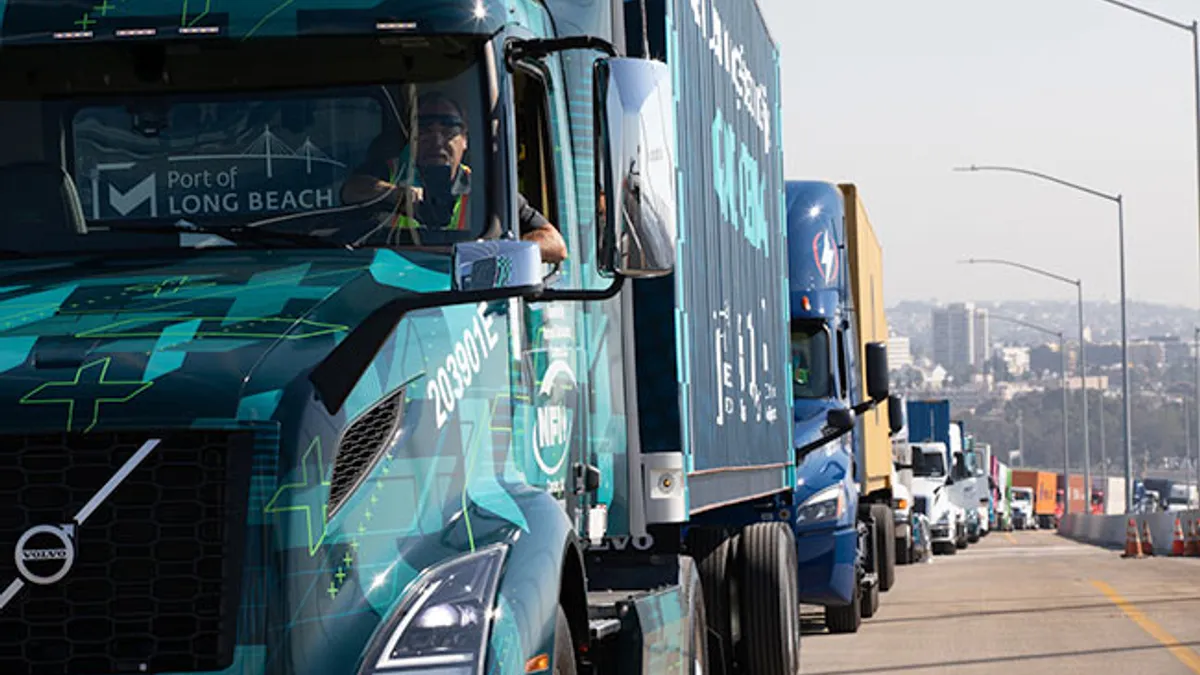Dive Brief:
- A new rulemaking launched by the California Public Utilities Commission in late June will allow regulators to take a closer look at modernizing the electric grid, in anticipation of a wave of distributed energy resources (DERs) including millions of electric vehicles.
- The commission intends, through the proceeding, to provide a framework that will allow distributed solar, storage, electric vehicles and other DERs to better integrate into the grid, improve distribution system planning — especially around EV charging infrastructure — and enable better grid investments that take into account DER siting plans and resiliency considerations.
- The new rulemaking, like the commission's integrated resource planning rulemaking, has the potential to become "the mother of all proceedings," according to Bill Kissinger, partner with law firm Morgan Lewis. "There's a need to focus attention on the regulatory structure and the goals of distributed energy resources that have been kicked down the road for a long time … This is an enormously important proceeding, and it's very ambitious," he added.
Dive Insight:
The DER sector is anticipated to grow in California as well as the country more broadly. In the U.S., battery storage, customer-sited solar, demand-side management, electric vehicle infrastructure and other DERs are anticipated to reach a total installed capacity of 387 GW by 2025, according to research cited by the CPUC. For context, coal and nuclear power today have a combined capacity of roughly 330 GW. In California, regulatory forecasts have suggested behind-the-meter solar generation, behind-the-meter storage capacity, and electric vehicle demand will increase by 260%, 770% and 370% respectively from 2019 to 2030.
These forecasts have pushed regulators to think more about the next wave of DER policy development. Many of these new DERs, including electric vehicles, behind-the-meter storage and space and water heating systems will be capable of shifting load, said CPUC Commissioner Darcie Houck at an agency meeting in late June.
"The new wave of DERs, led by millions of new electric vehicles and all-electric buildings, will pose new challenges for distribution planning and demand management, but also new opportunities for making customer load more flexible, addressing the duck curve, increasing customer resiliency and promoting equity," Houck said.
DERs could also play a valuable role in local reliability, an opportunity that California hasn't captured yet, according to CPUC Commissioner Martha Guzman Aceves. While distributed resources have traditionally been seen as a way to reduce load, they could also play to the supply side, she added.
"There's a large number of megawatts that are needed locally for reliability needs, and these DERs can provide a real opportunity if we really take [on] the challenge in the geographic locations that are difficult to build in," Guzman Aceves said.
The commission's new rulemaking is organized into three tracks, and the first focuses on distribution system operator roles and tasks. In California, electric utilities generally take on the responsibility of distribution system planning and operations, but as the share of DERs on the grid grows, those roles will evolve, the commission noted in its order. Investments and cost recovery for the distribution system currently revolve around large capital investments and a larger share of DERs could cut into utility rates of return. One way to address this issue is creating incentive structures that aren't tied to capital investments, the order stated, or establishing a third-party distributed system operator.
The second track will focus on the near-term improvements to distribution resource plan frameworks, while the third will look at near and medium-term grid modernization investments, as well as better aligning utility rate case filings with planned distribution infrastructure investments. The commission is aiming to issue proposed decisions on all three tracks in 2023 and 2024.
One of the key questions regulators will have to tackle is how much of a market they will set up for distributed energy resources to participate in, Kissinger said. Utilities currently handle most of the distribution system planning, going out with request-for-offers for specific resources, he added, and "the question is, to what degree do you take that away from the IOUs and set up a marketplace, where people are able to bid stuff into the market in the same way generators bid their generator, or load bids their demand into the independent system operator's transmission [system]."
Regulators also plan to focus on the implications of DER growth for electricity rates. In February, the agency released a white paper that indicated rising electricity rates in the last few years have disproportionately hit lower-income Californians, and that these customers aren't as likely to invest in DERs to reduce their bills.
This focus is important, according to Kissinger, who said that right now the system is set up so that people with means can put up their own behind-the-meter resources. And as more people adopt DERs, regulators will need to figure out who is going to pay for the system that is left behind, he said.
"As people are finding ways to not use power from the grid, or not use power when it's most expensive, how do you reallocate the cost so it doesn't fall unfairly on people who can't afford DERs?" he said.















